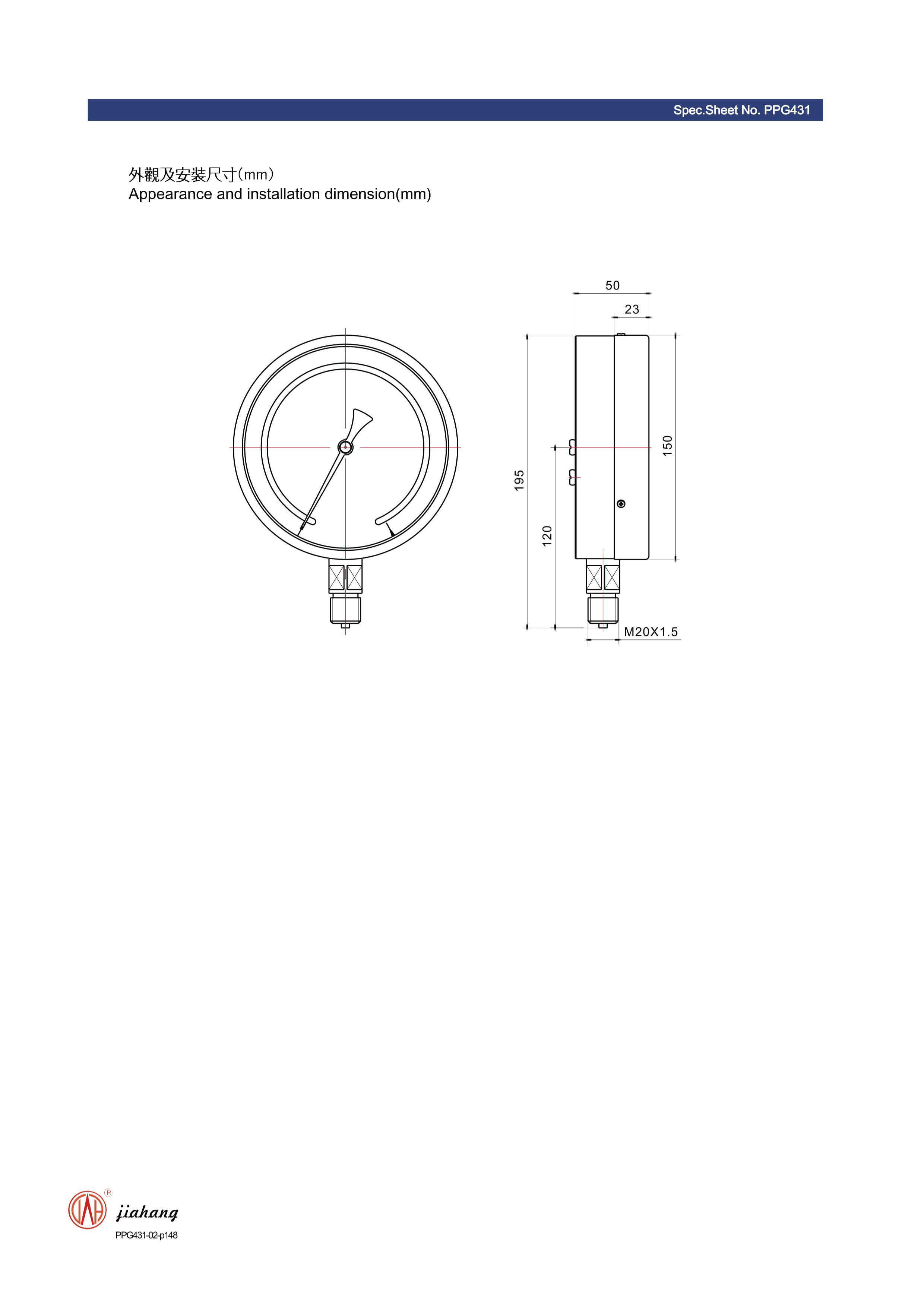
Oct . 30, 2024 12:09 Back to list
flat diaphragm pressure gauge
Understanding Flat Diaphragm Pressure Gauges
Pressure measurement is a critical aspect of numerous industrial processes, and among the various types of pressure gauges available today, the flat diaphragm pressure gauge stands out for its reliability and accuracy. This innovative device, incorporating a flexible diaphragm, provides essential data in a wide range of applications, from mechanical engineering to fluid control systems.
At its core, the flat diaphragm pressure gauge operates on a simple yet effective principle. When pressure is applied, it causes the diaphragm to deflect. This deflection is proportional to the pressure exerted, and the movement is translated into a readable measurement via a mechanical linkage system. The design allows for high sensitivity and consistent performance, making it a preferred choice for many engineers.
One of the significant advantages of flat diaphragm pressure gauges is their versatility. They can measure both gaseous and liquid pressures, accommodating a variety of substances without the need for extensive modifications. This flexibility makes them invaluable in industries such as oil and gas, water treatment, food and beverage production, and pharmaceuticals, where the monitoring of fluid pressures is crucial for process efficiency and safety.
Another notable feature of flat diaphragm pressure gauges is their ability to handle high levels of shock and vibration. The diaphragm's design minimizes the risk of damage from sudden pressure changes or environmental conditions, ensuring longevity and reliability. Furthermore, these gauges can be engineered to withstand corrosive substances, making them suitable for harsh environments.
flat diaphragm pressure gauge

Accuracy is paramount in pressure measurement, and flat diaphragm gauges excel in this regard. They offer high precision across a broad range of pressures, with minimal hysteresis, which is the lag between applied pressure and the reading. This characteristic is particularly important in applications where even slight pressure fluctuations can lead to significant operational issues or safety hazards.
Installation and maintenance of flat diaphragm pressure gauges are typically straightforward, further enhancing their appeal. Many models come with standardized mounting options, which simplifies integration into existing systems. Regular maintenance often involves simple cleaning and calibration, enabling consistent performance over time without extensive downtime.
In addition to their practical benefits, flat diaphragm pressure gauges are also designed with user-friendliness in mind. Many models feature clear, easy-to-read dials with various measurement units, enabling operators to quickly assess the readings. Some advanced gauges even incorporate digital displays and connectivity options for real-time monitoring and data logging, making them a suitable choice for modern automated systems.
In conclusion, flat diaphragm pressure gauges represent a reliable and versatile solution for pressure measurement across diverse industries. Their ability to provide accurate readings under various conditions, combined with their durability and ease of use, makes them an essential tool for engineers and operators alike. As technology advances, these gauges are likely to continue evolving, further enhancing their capabilities and applications.
-
AG Precision Pressure Gauges High Accuracy & Global Exporters
NewsMay.21,2025
-
Ashcroft Diaphragm Pressure Gauges Precision & Durability
NewsMay.21,2025
-
Micro Differential Pressure Gauges High-Precision & Compact Solutions
NewsMay.20,2025
-
Pressure Gauges with Diaphragm Seals High-Accuracy & Corrosion-Resistant
NewsMay.20,2025
-
Capillary Type Differential Pressure Gauge Precision Measurement Solutions
NewsMay.19,2025
-
Diaphragm Seal Pressure Gauges High Accuracy & Corrosion Resistance
NewsMay.19,2025
